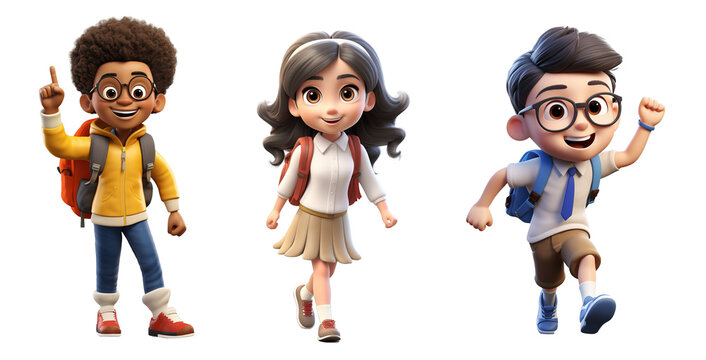Introduction: Why 3D Animation Cartoon Character Design Matters
Cartoons are no longer limited to TV. They appear in ads, games, films, and social media. Audiences love characters that feel alive. A strong 3D animation cartoon character captures attention and builds emotion.
But designing such a character takes skill and the right approach. You need tools, planning, and practice. This guide shares the essentials to help you improve your design workflow.

The Foundation of Character Creation
Start with a Concept
Every 3D animation cartoon character begins with an idea. Ask yourself: Who is the character? What role does it play? Is it funny, cute, or heroic? A clear concept gives your design purpose.
Sketch Before You Model
Even if you are a digital artist, sketching helps. Simple drawings show the shape, proportions, and key features. This step saves time later in the pipeline.
Essential Tools for 3D Cartoon Work
The right software makes the process easier. Here are popular choices:
- Blender: Free, powerful, and open-source.
- Maya: Industry standard for animation and rigging.
- ZBrush: Perfect for sculpting fine details.
- Substance Painter: Adds textures and life to your character.
Each tool has strengths. Many artists combine them for best results.
Modeling: The Heart of Cartoon Character Design
Modeling shapes the body and face. When building a 3D animation cartoon character, you can:
- Use box modeling for simple forms.
- Try sculpting for organic shapes.
- Keep proportions playful and stylized.
Cartoon style gives freedom. Exaggerated eyes, heads, or hands often add appeal.
Rigging and Animation Basics
A character needs bones and controls to move. Rigging adds this structure. Animation then brings it to life.
Tips for smooth rigging:
- Keep joints clean.
- Test movements early.
- Add facial rigs for expressions.
When animating, focus on timing. Cartoons shine with exaggerated motion. A bounce, stretch, or pause makes a character fun.
Texturing and Shading
Textures give surface detail. Your design may need bright colors, hand-painted looks, or soft shading.
Use these tricks:
- Simple colors often work best.
- Stylized textures add personality.
- Test materials under different lights.
Tips to Improve Workflow
Use References
Look at real animals, people, or objects. Even a cartoon must feel believable.
Focus on Silhouette
A strong outline makes a 3D animation cartoon character recognizable from afar.
Keep Files Organized
Name layers and objects. This makes updates easier.
Practice Often
Like any art, the more you create, the better you get.
>>> Read more: AI-Powered Animation: How AI Is Transforming 3D Content Creation
Common Mistakes to Avoid
- Adding too much detail.
- Ignoring rigging during modeling.
- Forgetting how the character will be used.
Avoiding these problems keeps projects smooth and efficient.
Techniques for Unique Character Styles
- Exaggeration: Big heads, tiny bodies, or funny shapes.
- Color psychology: Bright tones for joy, dark shades for mystery.
- Appeal: Simple and clear designs attract viewers.
These choices ensure your 3D animation cartoon character stands out.
Case Study: From Sketch to Screen
One artist began with a sketch of a playful cat. Using Blender, they modeled the body with simple forms. ZBrush added fur details. Substance Painter gave bright textures. Rigging allowed jumps and spins. The final 3D animation cartoon character was used in an ad. It delivered charm and boosted brand recall.
The Future of Cartoon Character Design
With VR, AR, and games, demand keeps rising. Studios need characters that are fast to build but rich in detail. Tools will grow smarter. Yet creativity will always matter most. A strong idea keeps your design unique.
Conclusion: Bring Your Characters to Life
Designing a 3D animation cartoon character is exciting. With the right tools, planning, and techniques, any creator can succeed.
And when it is time to render, speed matters. Local machines often slow down big projects. That is where 3S Cloud Render Farm helps. It gives artists the power to render faster, scale projects, and deliver pro results. Pairing cloud rendering with strong design ensures every character looks its best.